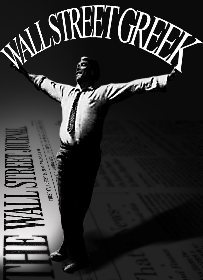Inflation Risk: Reality or Fantasy, It Matters to the Market
Visit the front pages of Wall Street Greek and Market Moving News to see our current coverage of economic reports and financial markets.

 On a fateful day in late March, in the middle of the rally, the market opened gap-lower and dropped 2% on the day. There were three factors attributed to the decline, but the gap-open revealed the true culprit, inflation fear. The PCE Price Index, released that morning, was, needless to say, troubling.
On a fateful day in late March, in the middle of the rally, the market opened gap-lower and dropped 2% on the day. There were three factors attributed to the decline, but the gap-open revealed the true culprit, inflation fear. The PCE Price Index, released that morning, was, needless to say, troubling.
(Stocks: VIPSX, IMF, PBSAX, APOIX, MIABX, PIFPX, DIPSX, PBPPX, PIFSX, GLD, GG, AIG, GM, DIA, SPY, QQQQ, NYX, DOG, SDS, QLD, XLF, IWM, TWM, IWD, SDK)
In an old copy of our "Week Ahead," we wrote:
"The Core PCE Price Index is the Fed's most favored inflation gauge. It is expected to produce a change this time around that the market would seem likely to dislike due to recently revived inflation concern. In case you can't read between the lines, this may prove a catalyst for Friday decline in the broader marketplace."
After receiving the Personal Spending and Income Report in the pre-market on that last Friday in March, the broader indexes opened gap lower and closed down for the day. The S&P 500 Index ^GSPC was off by 2%, the Dow Jones Industrials ^DJI fell 1.9% and the Nasdaq Composite ^IXIC sank 2.6% to be exact. A "gap open" price change happens for a reason: because of a catalyst that came to be before the trading day began.
There were three factors widely attributed as responsible for the market's decline on that telling day, but only one of them came to be in the pre-market. For this reason, I suppose the other two only played supportive roles, while inflation concern played the lead.
Market Driving Factors
First Supportive Factor - Regulation Worry
On Friday, March 27th, Treasury Secretary Geithner testified before the House Financial Services Committee on the subject of financial regulatory reform. The Secretary suggested the creation of a "super regulator" that would be empowered to seize private businesses when the failure of those businesses threatened the broader system. He also proposed a tighter watch on hedge funds, and a clearing house for derivatives markets has been discussed as well.
Despite the big mess we have gotten ourselves into because of the human tendencies to lie, cheat and steal, it seems the market still remains fearful of government meddling, given its reaction on that day in March. Can you imagine that after all the chicanery that has taken place, the hawks are still preying on the chickens... I draw an analogy here to the tendency of criminals to justify their crimes, however heinous they may be. We are clearly incapable of regulating ourselves, and that may have never been more obvious than during this latest crisis. I point to the many faults, ranging from biased credit rating agencies, to greedy mortgage brokers, to exotic securities designers and marketers (read Wall St.) and negligent banks.
Representative Al Green of Texas said it best when he stated, "Too big to fail is the right size to regulate." Yes, and I agree; we need supervision. Like bearing your way through the surgery you dread but realize you need, I think the market should also now accept this strong medicine for its better good.
We think the "super regulator" idea troubled investors the most, because of concern the decision to seize private property might be too subjective in nature. " To that end, it's not necessarily the regulation we fear, but the designers behind the rules who have proven at times as inept as the players on the field. In fact, it was Congress' home ownership push that stoked the mess in the first place.
The Second Supportive Factor - The Rally Extended Far
Despite that Friday's loss, shares still closed broadly higher for the week and were on target to return fabulously for the month of March. In fact, stocks had gained over 20% from the low reached on March 9, classifying the run as a full blown bull market. Given what preceded this nascent rally, it was only prudent to reconsider positions. Friday's are notorious for this, and weekends also offer too much down-time to read, review and reconsider. Thus, the market drifted again on Monday, albeit aided by the General Motors (NYSE: GM) bankruptcy scare.
The Real Catalyst - Inflation Fear
Whether you think inflation is a near-term threat or a far off concern would not prevent your believing it was the key market driver on that peculiar Friday. This is because perception drives stocks, not necessarily reality. I argue that the PCE Price Index published in the pre-market played the key role in killing this young bull (or bear market rally), albeit a temporary death prescribed to it at the time.
The Personal Income & Outlays Report, which was issued that day, contains the Fed's favorite inflation gauge, and therefore a measure the whole of the marketplace watches closely. The aforementioned PCE Price Index rose 0.3% in February, matching January's stubborn increase. What's more troubling is that the Core PCE Price Index also increased 0.2%, again matching the climb in January. The Core PCE rise was in line with expectations, but concerning just the same (as we alluded to in our weekly copy).
The Fed and economists worldwide anticipate prices will ease due to demand softness. Indeed, commodity and raw materials prices have already dropped precipitously from bubblistic points of the past, though they are somewhat recovered from their lows. Yet, prices at the consumer level remain stubbornly held up, or anchored as the Fed puts it. There has been price improvement, but maybe not as much as expected.
Looking at the year-to-year change in the Core PCE, we can better see a decline in prices. The year-to-year change for February was +1.8%, certainly down from the 2+% levels we saw before the recession began. However, February's measurement was hotter than January's level of 1.7%, raising more than a few eyebrows.
Markets are not worried so much about the current level of inflation, but the future level that might get a head start if prices don't drop some more before this recession is through. More than a handful of economists are concerned about the potential side effects of the Fed's drastic and historic monetary and non-traditional actions, not to mention other factors. So when looking around for potential catalysts for market cascade, consider inflation a threat. While it may or may not be a credible threat to the economy, it seems to have clearly proven a threat to stocks.
The next PCE Price Index reporting is pending for Thursday April 30th. Earlier this month, consumer prices remained stubbornly anchored, while the producer price index showed pricing giving ground. Consumer level price stubbornness seems to say investor beware come month's end...

Please see our disclosures at the Wall Street Greek website and author bio pages found there.


Inflation Fear Proves a Real Threat
 On a fateful day in late March, in the middle of the rally, the market opened gap-lower and dropped 2% on the day. There were three factors attributed to the decline, but the gap-open revealed the true culprit, inflation fear. The PCE Price Index, released that morning, was, needless to say, troubling.
On a fateful day in late March, in the middle of the rally, the market opened gap-lower and dropped 2% on the day. There were three factors attributed to the decline, but the gap-open revealed the true culprit, inflation fear. The PCE Price Index, released that morning, was, needless to say, troubling.(Stocks: VIPSX, IMF, PBSAX, APOIX, MIABX, PIFPX, DIPSX, PBPPX, PIFSX, GLD, GG, AIG, GM, DIA, SPY, QQQQ, NYX, DOG, SDS, QLD, XLF, IWM, TWM, IWD, SDK)
In an old copy of our "Week Ahead," we wrote:
"The Core PCE Price Index is the Fed's most favored inflation gauge. It is expected to produce a change this time around that the market would seem likely to dislike due to recently revived inflation concern. In case you can't read between the lines, this may prove a catalyst for Friday decline in the broader marketplace."
After receiving the Personal Spending and Income Report in the pre-market on that last Friday in March, the broader indexes opened gap lower and closed down for the day. The S&P 500 Index ^GSPC was off by 2%, the Dow Jones Industrials ^DJI fell 1.9% and the Nasdaq Composite ^IXIC sank 2.6% to be exact. A "gap open" price change happens for a reason: because of a catalyst that came to be before the trading day began.
There were three factors widely attributed as responsible for the market's decline on that telling day, but only one of them came to be in the pre-market. For this reason, I suppose the other two only played supportive roles, while inflation concern played the lead.
Market Driving Factors
First Supportive Factor - Regulation Worry
On Friday, March 27th, Treasury Secretary Geithner testified before the House Financial Services Committee on the subject of financial regulatory reform. The Secretary suggested the creation of a "super regulator" that would be empowered to seize private businesses when the failure of those businesses threatened the broader system. He also proposed a tighter watch on hedge funds, and a clearing house for derivatives markets has been discussed as well.
Despite the big mess we have gotten ourselves into because of the human tendencies to lie, cheat and steal, it seems the market still remains fearful of government meddling, given its reaction on that day in March. Can you imagine that after all the chicanery that has taken place, the hawks are still preying on the chickens... I draw an analogy here to the tendency of criminals to justify their crimes, however heinous they may be. We are clearly incapable of regulating ourselves, and that may have never been more obvious than during this latest crisis. I point to the many faults, ranging from biased credit rating agencies, to greedy mortgage brokers, to exotic securities designers and marketers (read Wall St.) and negligent banks.
Representative Al Green of Texas said it best when he stated, "Too big to fail is the right size to regulate." Yes, and I agree; we need supervision. Like bearing your way through the surgery you dread but realize you need, I think the market should also now accept this strong medicine for its better good.
We think the "super regulator" idea troubled investors the most, because of concern the decision to seize private property might be too subjective in nature. " To that end, it's not necessarily the regulation we fear, but the designers behind the rules who have proven at times as inept as the players on the field. In fact, it was Congress' home ownership push that stoked the mess in the first place.
The Second Supportive Factor - The Rally Extended Far
Despite that Friday's loss, shares still closed broadly higher for the week and were on target to return fabulously for the month of March. In fact, stocks had gained over 20% from the low reached on March 9, classifying the run as a full blown bull market. Given what preceded this nascent rally, it was only prudent to reconsider positions. Friday's are notorious for this, and weekends also offer too much down-time to read, review and reconsider. Thus, the market drifted again on Monday, albeit aided by the General Motors (NYSE: GM) bankruptcy scare.
The Real Catalyst - Inflation Fear
Whether you think inflation is a near-term threat or a far off concern would not prevent your believing it was the key market driver on that peculiar Friday. This is because perception drives stocks, not necessarily reality. I argue that the PCE Price Index published in the pre-market played the key role in killing this young bull (or bear market rally), albeit a temporary death prescribed to it at the time.
The Personal Income & Outlays Report, which was issued that day, contains the Fed's favorite inflation gauge, and therefore a measure the whole of the marketplace watches closely. The aforementioned PCE Price Index rose 0.3% in February, matching January's stubborn increase. What's more troubling is that the Core PCE Price Index also increased 0.2%, again matching the climb in January. The Core PCE rise was in line with expectations, but concerning just the same (as we alluded to in our weekly copy).
The Fed and economists worldwide anticipate prices will ease due to demand softness. Indeed, commodity and raw materials prices have already dropped precipitously from bubblistic points of the past, though they are somewhat recovered from their lows. Yet, prices at the consumer level remain stubbornly held up, or anchored as the Fed puts it. There has been price improvement, but maybe not as much as expected.
Looking at the year-to-year change in the Core PCE, we can better see a decline in prices. The year-to-year change for February was +1.8%, certainly down from the 2+% levels we saw before the recession began. However, February's measurement was hotter than January's level of 1.7%, raising more than a few eyebrows.
Markets are not worried so much about the current level of inflation, but the future level that might get a head start if prices don't drop some more before this recession is through. More than a handful of economists are concerned about the potential side effects of the Fed's drastic and historic monetary and non-traditional actions, not to mention other factors. So when looking around for potential catalysts for market cascade, consider inflation a threat. While it may or may not be a credible threat to the economy, it seems to have clearly proven a threat to stocks.
The next PCE Price Index reporting is pending for Thursday April 30th. Earlier this month, consumer prices remained stubbornly anchored, while the producer price index showed pricing giving ground. Consumer level price stubbornness seems to say investor beware come month's end...

Please see our disclosures at the Wall Street Greek website and author bio pages found there.












0 Comments:
Post a Comment
<< Home